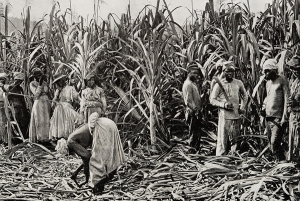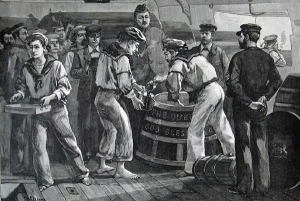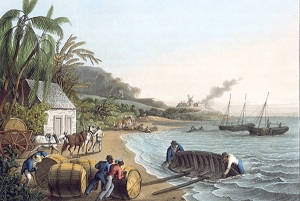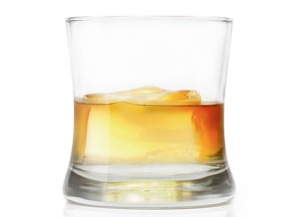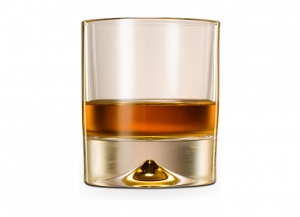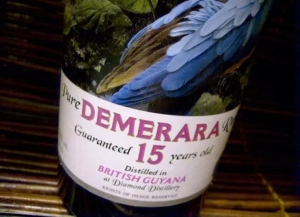Welcome to your gateway into the rich and nuanced vocabulary of rum! Whether you’re a seasoned aficionado or just beginning to explore this fascinating spirit, understanding the terminology is key to appreciating its full depth and complexity and our Rum Glossary is a great pace to start.
This glossary is your comprehensive guide to the language of rum, from production methods and flavour profiles to historical terms and cocktail lingo. With clear definitions and insightful explanations, you’ll navigate the world of rum with confidence, expanding your knowledge and enhancing your enjoyment of this versatile spirit.
So, let’s dive in and unlock the language of rum, one term at a time. Whether you’re deciphering a tasting note, exploring a cocktail menu, or simply chatting with fellow enthusiasts, this glossary will be your invaluable companion on your rum journey. Cheers to expanding your rum vocabulary!
A
•acre – Unit of surface measurement equal to 43,560 square feet,or 0.4 hectare.
• age statement – The number of years a spirit has been aged in wood; in the US, the age statement must represent the youngest spirit in a blend.
• agricole – (French) – Agricultural. Rhum agricole is rhum made from fresh cane juice, as opposed to rhum industriel, which is made from molasses.
• aguardiente – (Spanish) – Literally “Burning water.” Generic for hot, strong, unaged sugar cane spirit (esp. Columbia and other South American regions.)
• aldehyde – Colorless volatile liquid, obtained from alcohol by oxidation. Aldehydes are responsible for floral and fruit aromas in rum, are a natural part of the fermenting and distilling process, and can be good in small quantities.
• alembic – (French) – pot still
• analyzing column – First column of a multiple-column still, also known as the beer still.
• añejo – (Spanish) – There is no requirement as to how old rum has to be to be designated añejo. Most añejo rums are aged more than a couple of years, although a few are not, and may be colored with caramel for effect.
• appelation d’origine contrôlée – (French) – Designation for spirits from a specific region and to particular standards; also used on wine and spirit labels in France.
B
• babash – Locally made rum, generally illicit.
• bagasse – The fibre left once sugar cane is crushed. Commonly burned to fire the boiler for distillation.
• beer – In the rum industry, beer refers to fermented molasses.
• beer still – First column in a four-column still. Is also called the ‘analyzing column’.
• brix – Describes the percent of suspended solids in a liquid. 50 brix would denote 50% suspended solids by weight.
C
• cachaça – Brazilian sugar-cane spirit made from sugar cane juice and distilled to less than 54% alcohol by volume.
• caramel – Caramel is introduced to many aged rums by aging them in oak barrels that have been charred (burned) on the inside. Caramel is also frequently added to aged rums to increase the colour of the rum.
• chairman – Person who sits in front of and directs the operation of a small pot still.
• chêne – (French) – Oak. As in barrels for aging rhum.
• coffey still – The original column still design by Aeneas Coffey.
• column still – A sophisticated 19th Century innovation that replaces the pot still with stacks of evaporators called columns. Typically, column stills will have two columns of different design that perform different functions in the distilling process.
• copper still – Copper is generally accepted to produce the best spirits due to the interaction between the copper and acidic components in the fermented wine.
D
• Demerara – Associated with the Demerara River in Guyana, NE South American continent demerara rum, demerara sugar. The site of one of the first sugar/rum producing regions of South America.
• distillation – Process of concentrating a component of a mixture by heating the mixture and then collecting and condensing the vapor.
• distillerie – (French) – distillery.
• dock rum – Rum aged in barrels at sea in the holds of ships, or in wharf warehouses in Britain. Now rare, dock rum was once a ubiquitous aspect of the rum trade.
• dunder – Fermented wash.
E
• esters – Chemical compounds formed by the reaction of alcohol and acids during fermentation. Esters are present in small quantities after distillation, and are also formed during aging in wood. Esters are responsible for fruit flavors in rum.
F
• falernum – Low alcohol blend of rum, cloves and sugar cane syrup first produced in Barbados. Generally used as a sweet mixer.
• fermentation – Process of yeast (either naturally occurring or artifically introduced) converting sugar into alcohol.
• foudre de chêne – (French) – large cask, generally 35,000 to 65,000-liter capacity, used for storing rhum blanc or aging rhum paille.
• fusel oil – Light oils formed during fermentation that accumulate during distillation. Generally, fusel oils are an undesirable toxic by-product and too much can contribute to hangovers. These oils are removed in multiple column stills or through successive distillat
• fût – (French) – barrel, generally accepted to be less than 650 liters.
• fût de chêne – (French) – oak barrel used for aging.
G
• gallon – Liquid measure of four quarts, 231 cubic inches, or approximately 3.8 liters.
• gooseneck – Connects the pot or kettle of a pot still to the condenser or retorts.
• grand arôme – (French) – rhum industriel made from fermented molasses and vinasse.
• guildive – (French) – rhum
H
• heads – The first condensate that comes from the still. Also called high wines. The heads are also the flat ends of a barrel.
• hectare – Metric unit of surface measurement equal to 10,000 square meters, or 2.471 acres.
• high wines – The first liquor that comes from the still, also called heads.
• hogo – Fusel oils that can be seen floating on top of crudely distilled rum; name for locally distilled rum, generally illicit.
• hosghead – a wooden barrel of about 42″ in height and 36″ in diameter across the head. In the 18th century when sugar was shipped in hogsheads, this vessel would contain between 1600 and 1700 pounds of sugar.
• houillage – (French) – Recasking, the annual ritual where rum from the same production year is used to fill other barrels of rum to replace the volume that has evaporated (the “angels share.”) hydrometer – Device that compares the density of a sample with the density of water to directly indicate the alcohol content of the spirit.
• hydroselection column – Typically the third column of a four-column multi-column continuous still.
I
• imperial gallon – Equal to 277.42 cubic inches.
• industriel – (French) – industrial. Rhum industriel is made from molasses, as opposed to fresh cane juice.
L
• leeze – Residue left after the alcohol has been distilled from the fermented wine, also called vinasse.
• lele – (French) – naturally grown swizzle stick with generally five branches that grow perpendicular to the stem.
• let off – Term used at some of the older distilleries for leeze, or what is let off after distillation.
• liming – Derived from the term for 18th century British sailors, a reference to relaxing. In the islands, liming includes drinking rum with friends and sharing the news of the day.
• liter – Volume of one kilogram of water, 61.05 cubic inches.
• low wine – The last liquor that comes from the still, low wines contain less alcohol than the seconds that precede them.
M
• maitre rhumier – (French) – master distiller
• melasse – (French) – molasses
• millésime – (French) – vintage
• molasses – The thick black liquid that remains after all of the commercially producible sugar has been recovered from sugar cane juice.
• multiple-column still – An extensive distillation aparatus where multiple continuous stills are combined for improved flexibility and efficiency.
O
• overproof – Distilled spirit bottled at more than 50% alcohol by volume, or 100 US proof.
P
• paille – (French) – pale-straw-colored rhum that has aged less than the three years required to be called rhum vieux.
• pimento dram – Jamaican allspice liqueur with a rum base.
• pot still – The simplest type of still, consisting of a large pot-like bottom, where the fermented wash is heated, and topped with a gooseneck and condenser. A pot still may also incorporate one or more retorts. Marketing people commonly represent pot still rum as be
• proof – In the US, proof is twice the alcohol content measured in % Alcohol by Volume. 40% abv is 80 proof.
• proof gallon – (US) – A standard U.S. gallon at 100 proof, or its alcoholic equivalent. For example, 1 gallon of 200 proof spirits (100% abv) would equal 2 proof gallons; 10 gallons of 80 proof spirits (40% abv) would equal 8 proof gallons. TTB Circular 85-8
R
• rectifying column – Second column of a multiple-column still.
• reserve – Used to denote something special, such as limited production, but too-often used to market spirits which are neither limited production, nor special.
• retort – Closed vessel used to double-distill alcohol as an accessory to a pot still. Hot vapor enters the bottom of the retort and heats the liquid in the retort to vaporize the alcohol in the liquid.
• rhum – (French) – rum. Differentiates between the products of the French West Indies (rhum) and the products of the English-speaking islands (rum.)
• rhum agricole – (French) – rhum made from fresh cane juice, as opposed to molasses.
• rhum industriel – (French) – rhum made from molasses, as opposed to fresh cane juice.
• rhum paille – (French) – straw-colored rhum aged less than the three years required to be called rhum vieux.
• rhum vieux – rhum that has been aging in a barrel for more than three years. The barrel must be less than 650 liters.
• rum – Spirit distilled from the fermented sugar of the sugar cane plant. This sugar may be in the form of fresh juice, cane syrup or molasses.
S
• seconds – The second alcohol from the still, representing the most desirable “cut” between the heads and tails. This is the ethyl alcohol we drink and the best product from the still.
• still – Derived from the verb “distill,” the aparatus for extracting and condensing alcohols from fermented sugars. All liquor is produced in stills of one sort or another.
• strong – Referring to rum that is more than 50% alcohol by volume.
• sucerie – (French) – sugar factory.
T
• tafia – (French) – rum, rhum bullion
• tails – The last condensate collected from the still, also called the low wines.
• tres vieux – (French) – very old rhum, generally aged more than ten years.
V
• vesou – (French) – sugar cane juice.
• vieux – (French) – old. Rhum vieux is rhum that has been in a barrel of less than 650 liter capacity for more than three years. In the French islands, the first of July is the anniversary date for rhum. All rhum in the barrel by July first is one-year-old on this date.
• vin – (French) – wine, refers to fermented sugar cane juice.
• vinasse – (French) – residue left after the alcohol has been distilled from the fermented wine. Also known as leeze.
W
• wash – Mixture of yeast, water, and molasses to be fermented.
• wine – In the rum industry, fermented sugar cane juice.
